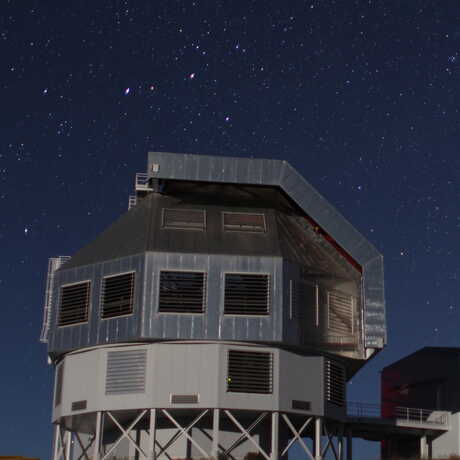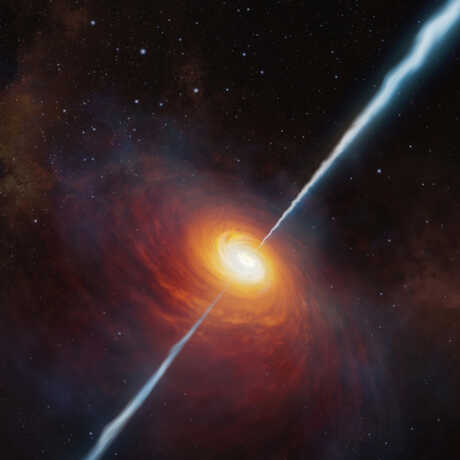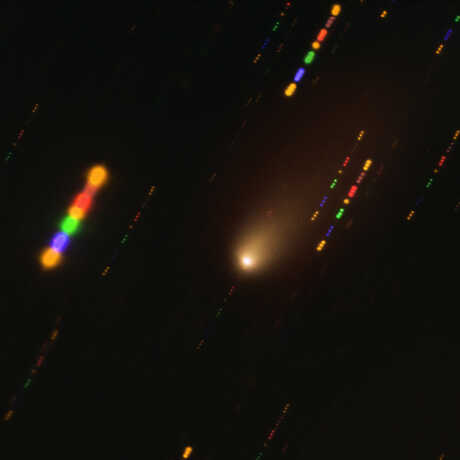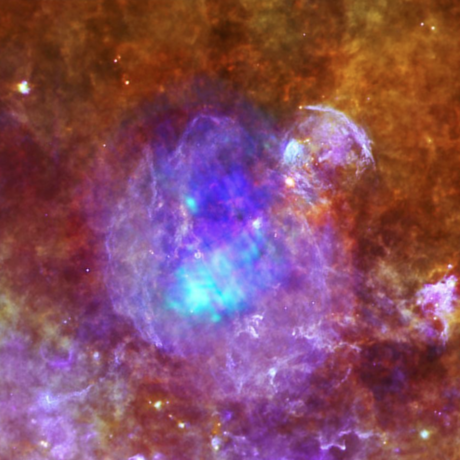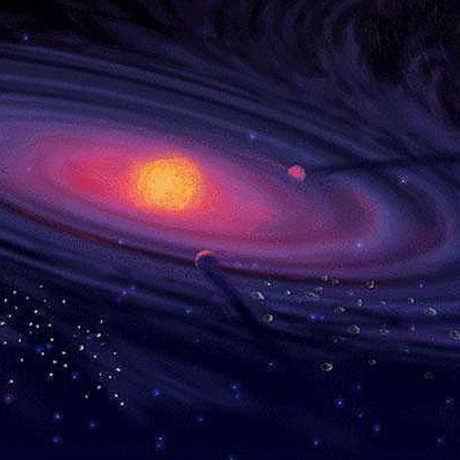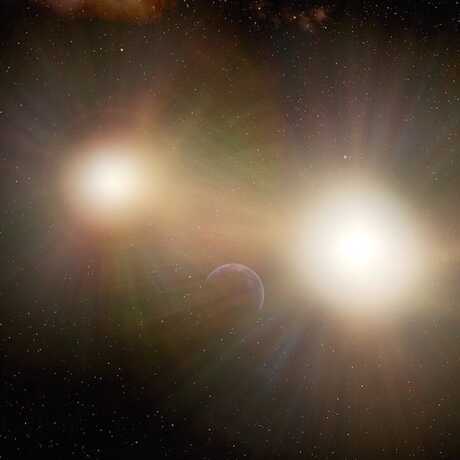Universe Update
Observations: Big News from Small Galaxies
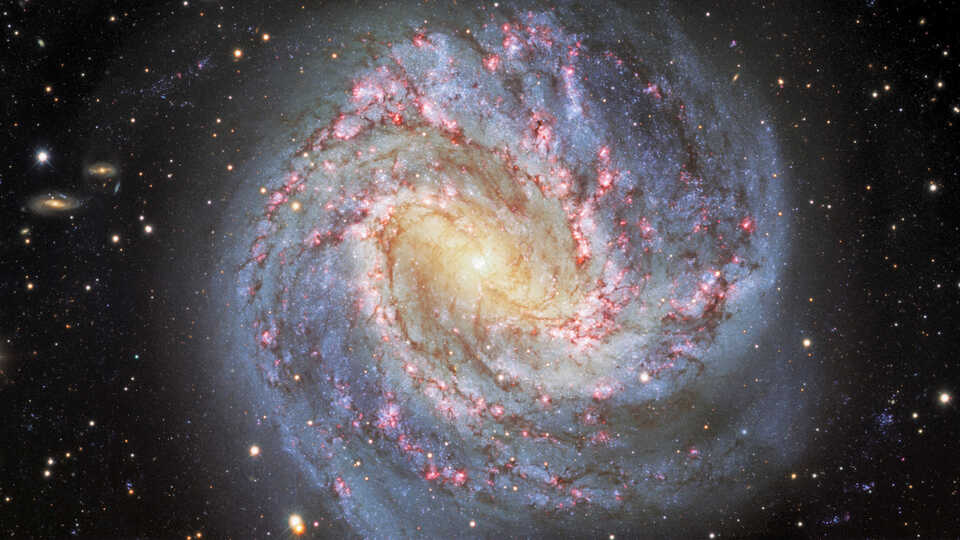
Two weeks ago, we introduced you to Observations, our new series featuring the latest findings by Chilean telescopes. Why Chile, you may ask? Well, because it’s the most important single place on Earth for observational astronomy. But also because our latest planetarium show, Big Astronomy: People, Places, Discoveries, covers this exact topic! And while you can’t come to the Academy and Morrison Planetarium to see the show (yet), we are live streaming it weekly on YouTube, each Wednesday at 11:30 a.m. (Here’s the link for tomorrow’s broadcast.)
The show covers why Chile is the perfect place to build telescopes and much more, and we focus on three of the many telescopes found in that narrow country. For our first report this week, let’s talk about the beautiful image above, released yesterday by the Dark Energy Camera (“DECam” for short) mounted onto the Víctor M. Blanco four-meter Telescope at the Cerro Tololo Inter-American Observatory (CTIO). (Big Astronomy talks a lot about DECam.)
The initial purpose of DECam was a dark energy survey that ended in 2019. Members of the astronomical community can now apply for time to use it for all sorts of observations, and the data collected are made publicly available. In this case, Messier 83 was imaged to aid future surveys of the upcoming Vera C. Rubin Observatory, just down the road from CTIO. It took 163 separate DECam exposures, with a total combined exposure time of over 11.3 hours, to create this portrait of the spiral galaxy—one of our close neighbors at only 15 million light years away. Lovely, isn’t it?
Observations from another telescope featured in Big Astronomy, the Atacama Large Millimeter/submillimeter Array (ALMA), also made the news recently. Astrophysicists used ALMA to observe a tidal dwarf galaxy (TDG) in order to understand how stars form. TDGs emerge from the debris of two older galaxies colliding with great force. They are active star-forming systems and pristine environments for scientists trying to piece together the early days of other galaxies, including our own Milky Way.
It’s understood that stars form within regions of molecular clouds. And, indeed, the researchers found that a TDG’s molecular clouds are similar to those found in the Milky Way, both in terms of size and content, hinting at a universality of the star-formation process. There was one surprise: large amounts of dispersed, or diffuse, gas. “This most likely means most of the molecular gas in this tidal dwarf galaxy is not involved in forming stars,” says lead author Miguel Querejeta. “ALMA’s observations were made with great precision so we can say with confidence that the contribution of diffuse gas is much higher in the tidal dwarf galaxy we studied than typically found in normal galaxies.”
Finally, let’s visit the Magellan telescopes at Las Campanas Observatory, where a group of MIT astronomers teased apart light from stars in the Tucana II dwarf galaxy to determine their “metal” content (note that astronomers refer to anything heavier than helium as a metal, which is a little different than the definition you probably learned in chemistry class). The stars within Tucana II were known to have low metal content, which indicates they likely formed very early on, when the Universe was not yet producing heavy elements in abundance. In fact, the stars at Tucana II’s core were previously found to have such low metal content that the galaxy was deemed the most chemically primitive of the known “ultrafaint” dwarf galaxies.
But, wait! The new observations from Magellan show that the outer stars are three times more metal-poor, and therefore more primitive, than those at the center! “This is the first time we've seen something that looks like a chemical difference between the inner and outer stars in an ancient galaxy,” says MIT’s Anirudh Chiti.
A likely explanation for the imbalance may be an early galactic merger, in which a small galaxy—possibly among the first generation of galaxies to form in the Universe—swallowed another nearby galaxy. This galactic cannibalism occurs constantly throughout the Universe today, but it’s unclear whether early galaxies merged in a similar way.
“We may be seeing the first signature of galactic cannibalism,” MIT’s Anna Frebel says. “One galaxy may have eaten one of its slightly smaller, more primitive neighbors, that then spilled all its stars into the outskirts.”
This violent finding, along with the discovery of an extended dark matter halo around Tucana II, were published last week in Nature Astronomy.
